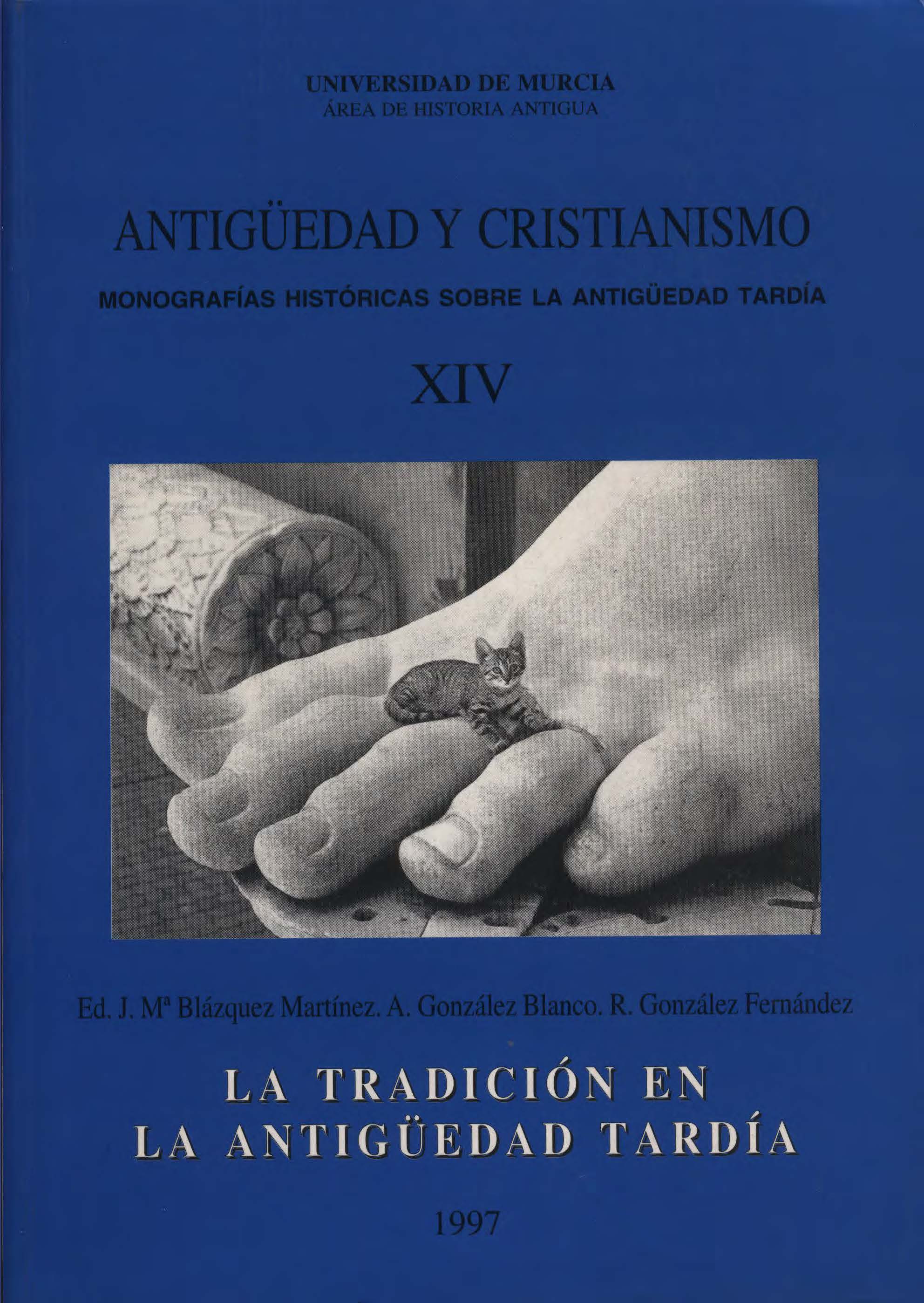THE PAGAN RELIGIOUS SURVIVAL IN THE FIFTH CENTURY: THE EXAMPLE OF RUTILIUS NATAMATIANUS
Abstract
This article studies the Galoroman poet Rutilio Namaciano, whose work reflects pagan religious topics, along with Stoic and Neoplatonic influences in a period of Christian predominance.
Downloads
References
ALFONSI, L.: asiquificeto politico e valore poetico nel de reditu suo di Rutilio Namaziano», Studi Romeri, 3, 1955, pp. 125-139. DE LABRIOLLE, P.: ~Rutilius Namatianus et les moinsn, REL, VI, 1928, pp. 30-41.
ALVAR, J.; BLÁNQUEZ, C.; WAGNER, C. (eds.): Héroes, semidioses y daimones (ARYS 1), Madrid, 1992
BALMUS, C.; «Rutilio Namaziano, l'ultimo poeta di Roma», M.C., 5, 1935, pp. 263-287.
BAYET, J.: La religión romana, Madrid, 1984
BLÁZQUEZ, J.M.: «Aspectos de la sociedad romana del Bajo Imperio en las Cartas de San Jerónimo», Gerión., 9, 1991, pp. 263-288 y «El monacato en los siglos IV, V y VI como contracultura civil y religiosa», Homenaje a Marcelo Vigil, Salamanca, 1989
BLÁZQUEZ, J.M.: El nacimiento del cristianismo, Madrid, 1990
Brown, P.R.L.; ~Aspects of the cnstianization of the riman Anstocracy», JRS, 51, 1961
CAMERON, A,: «Rutilius Namatianus, St. Agustín, and the date of the De Reditu», JRS, 57, 1967
CAMERON, A.: «Theodosius the Great and the regency of Estilicon», Harvard Classical Philology, 73, 1969, pp. 247-280
COSTER, H.: Late Roman Studies, Cambridge, 1968, p. 21 1. También Fontaine, J.; ~L'aristocratie occiden- tal devant le monachisme aux IV et V siecle», Riv. Hist. Lett. Rel., 1979
CREES, J.H.E.: Claudian as un historical authori9, Roma, 1968.
DEMOUGEOT, E.: De l'unit i la division de l'empire romain, 395-410, Paris, 1951
DEMOUGEOT: «Les oracles Sibilines et Stilicone)), REA, LIV, 1952, pp. 83-92.
FABIA, Ph.: «La table Claudienne de Lyonn, REA, XXXIII, 1931
FERRILL, A,: La caída del Imperio romano, Madrid, 1989, p. 107.
GAG, J.: Apollon Romain: Essai sur le culte d3Apollon et le devélopment du «ritus graecusx ci Rome, des Origines ci Auguste, Paris, 1955
GOOLD, G.P.: De Reditu Suo, Cambridge, 1982, p. 753. Vesserau-Fréchas, De Reditu Suo, Paris, 1961.
LENGER, M.Th.: «La notion del bienfait (philanthropon) royal», Studi in onore di Vincenzo Arangio Ruiz, 1, Nápoles, 1953
LIEBESCHUETZ, J.H.W.G.: Continuity and change in Roman Religion, Oxford, 1991
MANGA- NARO, G.: «La reazione pagana nel408-409 e il poemetto anonimo Contra Paganos» GIFC, 13, 3, 1960, pp. 210-224.
O'FLYNN, J.M.: Generalissimus of the western Roman Empire, Edmonton, 1983
Orlandis, J.; Historia de España. La España Visigótica, Madrid, 1977, pp. 28-29. García Moreno, L.A.; Historia de la España Visigoda, Madrid, 1989, p. 36.
PASTOR MUÑOZ, M.: «Cuestiones en tomo a Rutilio Namacianon, Hispania Antigua, 3, 1973, pp. 187-217.
STE CROIX, G.E.M.: «¿Por qué fueron perseguidos los primeros cristianos?», en AA.VV.: Estudios sobre Historia Antigua, Madnd, 1981
THOMPSON, E.A.: «German primitive military art», Past and Present, 14, 1958, pp. 2-29
-
Abstract944
-
PDF (Español (España))537
1. The authors non-exclusively assign the exploitation rights (reproduction, distribution, communication and transformation) to the magazine.
2. The works published in this magazine are subject to the Attribution-ShareAlike 4.0 International license (CC By SA 4.0). Therefore, they can be copied, used, disseminated, transmitted and publicly displayed, provided that:
i) the authorship and the original source of its publication (journal, editorial and URL of the work) are cited, thus allowing its recognition.
ii) it is allowed to remix, transform or create from the material while maintaining the same license as the original.
Note: Articles prior to 2022 incorrectly display the CC by SA license in the abstract page. They are under a CC by NC ND license as embedded in the article pdfs. Articles published in 2022 and after are under the CC by SA license.

3. Self-archiving conditions. Authors are allowed and encouraged to electronically disseminate the pre-print (version before being evaluated) and/or post-print (version evaluated and accepted for publication) versions of their works before publication, as it favors their publication. Earlier circulation and diffusion and with it a possible increase in its citation and reach among the academic community. Color RoMEO: verde.























